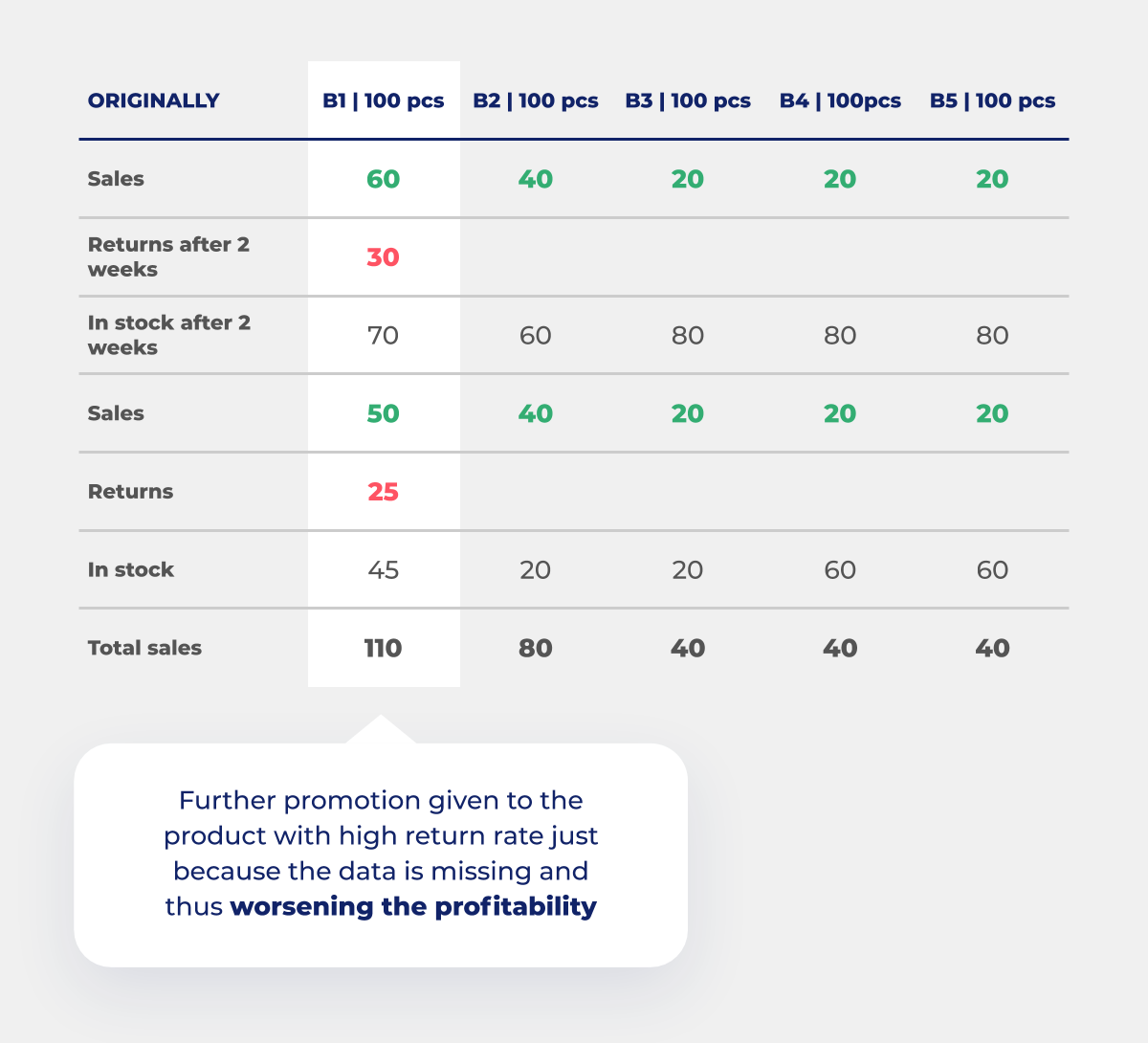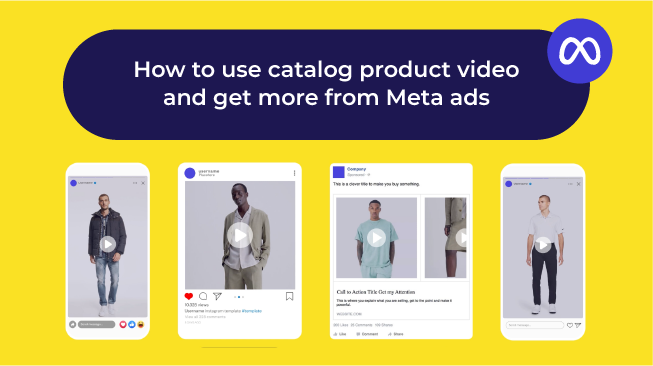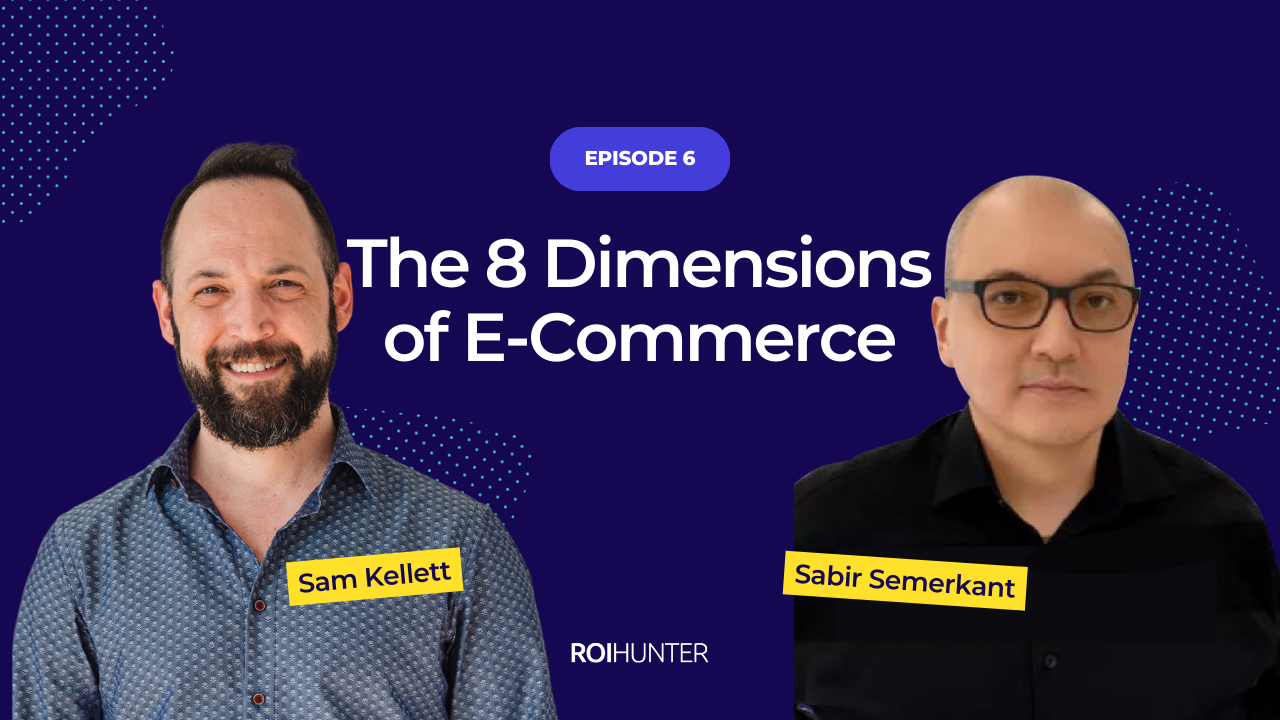You’re tallying up the profits and losses for the quarter, and it looks surprisingly great! Turns out we were able to even turn a bit of a profit. In fact, if everything stay- wait, hang on. Wait. Dave? Dave, you added in the return data, right? Dave? Dave!!
Returns. Online retail’s dirty little not-so-secret. While returns have always been an issue for retailers, the 8% return rate for brick-and-mortar sales is nothing compared to e-commerce, whose return rate sits between 25% and 40%.
It’s not just an issue of lower profits (though that’s certainly part of it); returns are the enemy of an organized budget. They’re a hard-to-pin-down variable that greatly increases the difficulty of determining your actual profit.
And if you’re doing a lot of your promotions through dynamic ads on Facebook, you should probably sit down for this: Facebook’s algorithm can create a feedback loop of over-promoting all of your most-returned items.
How Facebook's Recommendation Engine Works
Facebook’s algorithm does incredible work, but it’s important to know that the algorithm only works with the data it can get through your pixel. While there are a lot of benefits to how Facebook has their algorithm set up, one of the consequences is the aforementioned returned item feedback loop:
- Customer 1 clicks an ad and buys an item
- The post increases in engagement, and is further promoted by the algorithm
- Customer 2 sees the promotion and buys the item
- Meanwhile, Customer 1 is dissatisfied, and returns the item
- Facebook doesn’t see the return data. They continue promoting the item due to its engagement.
- If a lot of people are returning the item, that item is constantly cycling through the sale cycle. Facebook ends up counting more sales than there was even original inventory for, because the items are returned and sold again! This cycle creates more and more engagement, more and more promotion, and more and more returns.
Here’s an example:
Let’s say that you have five types of jackets in your catalogue, each with 100 pieces in stock. You’re promoting them via Facebook Dynamic Ads for a Broad Audience (DABA).
The Facebook algorithm doesn’t know yet which jackets are more engaging, so it will choose randomly. For our scenario, let’s say that two of these jackets are really popular: you sell 60 pieces of Jacket #1, and 40 pieces of Jacket #2. Nice!
These two jacket types look like clear winners to Facebook, so the algorithm doubles down on promoting them for the next 2 weeks. Unfortunately, it turns out that Jacket #1 is made from really uncomfortable material. So uncomfortable in fact, that 30 of the original 60 orders are returned within two weeks. Now Jacket #1 has 60 recorded “sales,” but the stock level is back up to 70! The algorithm sees Jacket #1 as a winner (110 sales after all) and promotes it. Another 50 sell, and within two weeks, 25 are returned.
So now Jacket #1 has 110 recorded sales, even though 55 of those sales were returned. Which means Facebook’s algorithm sees it as even MORE popular, and the cycle continues.

Influence Facebook to Lower Your Return Rate
It’s not that there’s a problem with Facebook’s algorithm, they just don’t have your return data. So to fix the problem we just need to...
Connect that return data! ROI Hunter’s Product Insights feature was developed to make product data integration simple and accessible. Product-level data (return rate, stock-level, etc.) is gathered from your channels, and combined with your catalogue, Google Analytics, and Facebook data within ROI Hunter’s platform.
With all data integrated, retailers can easily filter their catalogue to find all products with a high chance of return. Next, the retailer can create a rule to automatically exclude those highly returned products from future promotions, set them up with a special campaign, or however else the retailer would like to handle them.
Now, even if those items are purchased and returned, the cycle ends there: no more feedback loop. Beyond that, once a retailer has data on the likelihood of returns on these products, they can better plan their purchasing strategy for the future.
Final Thoughts
You’re losing between 25% and 40% of your sales for no reason; returns have long been a thorn in the side of e-commerce. There are a number of methods retailers use to keep returns at a minimum, and one of the strongest ways to achieve this is to prevent the highly returned items from being promoted in the first place (let alone over-promoted).
If you’re interested in learning more about ways to influence and enhance Facebook’s algorithm, take a look at our analysis of dynamic campaigns on Facebook.



.png)
